Frequently asked questions about the wolf in Italy
We have tried to answer all the frequently asked questions about the wolf and we have tried to do it in a simple way.
This section is constantly updated and do not hesitate to share this page among your contacts or to write to us to tell us your opinion, recommend some questions to add or send us your impression.
Is it true that the wolf has returned to Italy?
Almost reduced to extinction in the last century by a real persecution by man who could hunt him with traps, lead and poison, then there were a small number of animals, between 100 and 200, distributed among the rugged Apennine mountains of the central and southern Italy.
In Italy, hunting has been forbidden since 1971 and subsequently other decrees of the law protect the wolf as a particularly protected species.
Thanks to the protection, the abundance of prey, its great adaptability and the dispersion process typical of the species, which leads newborns to leave the herd in search of new companions and territories, it has spread throughout the peninsula until it arrives on the Alps.
Is it true that the wolf was "reintroduced" by someone?
The wolf did everything by itself: thanks to the legislative protection, the abundance of prey, its great adaptability and the dispersion process typical of the species, which leads newborns to leave the herd in search of new companions and territories, they it expanded across the peninsula until it reached the Alps.
During the dispersal process a wolf can also travel thousands of kilometers.
Is it true that there are "animal rights" or "Life Wolf Alps" projects that have "repopulated" our mountains of wolves?
The project Life Wolf Alps has the objective of carrying out coordinated actions for the long-term conservation of the population already existing in the Alps.
The only known reintroduction project is the one that took place in the United States, in Yellowstone Park where in the 90s a complex reintroduction project was undertaken that you can learn more by visiting this link (Eng).
I heard there are 5 wolves here. Will they become 20 in a few years? 50? 100?
The flocks in Italy are on average about 4/6 specimens but during the course of the year this number can grow or decrease for many factors.
Is it true that wolves in Italy weigh 50 or 60KG?
No, the Italian wolf population (Canis lupus italicus) is a unique subspecies in the world.
Male specimens can weigh up to almost 40Kg, females even over 30Kg.
The recent meeting in the Alps between the Italian wolf population and the Dinaric / Carpathian population (Canis lupus lupus) from countries such as Croatia and Slovenia has brought an important enrichment of the genetic heritage of our subspecies, with a slight increase in size and weight of wolves in the Eastern Alps, since the Dinaric / Carpathian population is slightly larger than the Italic one (males 40/45 kg females 30/35 kg).
But what does the wolf feed on?
Occasionally, especially if not adequately protected, it is possible to feed on domestic cattle, food remains of anthropogenic origin, carcasses and very rarely fruit.
The daily meat requirement varies from 3 to 5 kg.
Is it true that with the snow the wolves will "come down" to the village?
Our country is very man-made, the territories of the flocks are very large, on average from 100 to 200 km q. and often also include population centers.
Is it true that there are "hybrids" between wolf and dog?
Yes, wolf and dog belong to the same species (Canis lupus) and can reproduce giving rise to fertile offspring, as well as to transmit diseases.
The hybridization between dog and wolf threatens the integrity of the genetic patrimony of the wild species fruit of a natural selection occurred in millions of years by introducing the dog's genes into the genetic patrimony of the wolf which is instead the result of an anthropic selection occurred in 14.000 years .
In Italy there are wolves defined as hybrid, that is, which have genes belonging to the dog within their DNA.
Is it true that these "hybrids" are more "confident with man" and therefore dangerous?
Is it true that the wolf is dangerous to humans?
However, what should be kept in mind is that the wolf avoids the encounter with man, his great enemy over the centuries, fears him deeply, does not see him as a prey but rather as a threat from which to stand stay away.
Is it true that the wolf is dangerous for my dog?
The wolf can be a threat to dogs (they can attack and feed on them) when they are not under human control and are therefore left free to roam, stray, kept on the chain or not hospitalized in safe places especially at night.
The wolf, on the other hand, does not pose a potential threat to all those cases of dogs properly kept and under the control of their owner.
Is it true that with the return of the wolf I can no longer go walking in the woods?
The wolf sees a strong threat in man and tends to stay away and avoid any encounter.
Is it true that wolves had been exterminated by our ancestors?
For this reason the killing of the wolf, once present also in Sicily, was encouraged and rewarded with compensation.
Starting from the 70s of the last century, when little more than a hundred were left of wolves, some laws have protected the wolf brought to the threshold of extinction, preventing its indiscriminate killing and thus promoting natural recovery.
Is it true that some wolves have special "radio collars"? What are?
Collars radio equipped with GPS transmit the position of the wolf allowing researchers to obtain many useful data to study and understand their habits and behaviors.
Is it true that studying the wolf is difficult?
There are many non-invasive study techniques, such as tracing the slopes on snow useful for counting specimens of a flock, observations through automatic cameras called video / photo-traps or analyzes on biological samples such as excrements or urine.
Is it true that wolves have eaten all the animals in my forest? They no longer see it as before.
The presence of the wolf obliges its potential prey to change habits and attitudes, the animals must be much more alert and linger less in the open spaces to take less risks, for this reason one has the impression that there are fewer.
Is it true that the wolf eats farm animals such as sheep or cows?
This is why it is very important to encourage and encourage the protection of animals by breeders.
Is it true that the state "pays back" to shepherds for farm animals eaten by wolves?
However, it is important to underline that the compensation for damage on farm animals only covers the value of the predated head and does not take into account the "indirect" damage that a predatory attack can cause such as the loss of milk production, abortions. , missing animals.
Furthermore, the payment of compensation is often made with large delays and in some cases it is not congruous to the actual value of the garments.
Is it true that electrified networks and other means of preventing attacks are useless?
Often used in combination, they allow a breeder to drastically reduce or eliminate predations even if they sometimes lead to an increase in work and management costs.
Is it true that LGDs like Abruzzese Mastiffs are great for protecting animals from wolf attacks?
Yes, Abruzzese mastiffs or other breeds of guard dogs are the best means of preventing wolf attacks and have been used for many centuries in our country, with a tradition that originates in the regions of central Italy.
Is it true that protecting farmed animals is easy but shepherds don't want to do it?
Is it true that the wolf can be hunted legally?
Killing a wolf is a criminal offense punishable even with imprisonment, however hundreds of wolves are illegally killed in Italy every year.
Is it true that killing part of the wolves in Italy would solve the problem of attacks on farm animals?
No, as the experiences of some European countries demonstrate, where kills on a defined percentage of wolves have already been practiced for years, killings are not the solution to protect farms, nor even a "social calm" for the categories affected by the attacks .
Several studies testify that killing wolves on a certain territory does not prevent the remaining ones from attacking pets anyway.
Is it true that an estimated 300 wolves are killed annually?
Unfortunately, being poaching a practice often practiced in silence, it is assumed that the numbers may be much higher.
How many wolves are there in Italy? In the Apennines? And in the Alps?
In Italy there are an estimated 3300 wolves, of which about 900 in the Alps and the remaining number in the rest of the peninsula.
Today there are no wolves in Sardinia and Sicily, even if in the latter there was a proper subspecies of wolf now extinct by man at the beginning of the 900s.
What should I do if I meet a wolf?
Behave like any encounter with a wild animal, keeping a safe distance without interfering or trying to get close.
If the encounter makes you uncomfortable and you are on foot, speak aloud or clap your hands so that you can perceive the animal and move away slowly.
If instead you want to enjoy the meeting keep in mind that the slightest noise could cause the animal to run away immediately.
If you meet a wolf or any other wild animal and you are in a car, avoid following it, the best thing is to stop and wait for the animal to leave the roadway.
Is it true that there is a lobby of "lupists" that makes a lot of money on the wolf and wants its uncontrolled expansion?
What is this famous "wolf plan" that is often talked about?
The latest version available and approved by the regions is from 2002 and is available at this link, while a new version is still under discussion by the regions and the ministry which has yet to be approved.
What is the wolf for? Wasn't it better before?
It is the predator at the top of the food chain and ensures a balanced ecosystem rich in biodiversity.
For this reason, its presence and conservation are fundamental.

Our goal is important and to achieve it we need you.
Ensuring a future for wolves in Italy and Europe through coexistence with human activities: join us.

I'M NOT AFRAID OF THE WOLF APS
Association of Social Promotion
Registered in the APS Register
Emilia-Romagna Region n. 5622
Via Martyrs of Liberty, 51
43043 Borgotaro (PR)
Italy
Email
info@iononhopauradellupo.it
Certified Mail (PEC)
iononhopauradellupo@pec.it
Tax Code
92187370348
All photographs are the property of their respective authors and may not be reproduced without their permission. Homepage: video by Nicky Pe, photo by Stefano Manfredini.
Partner and supporter of I'm not afraid of the wolf









